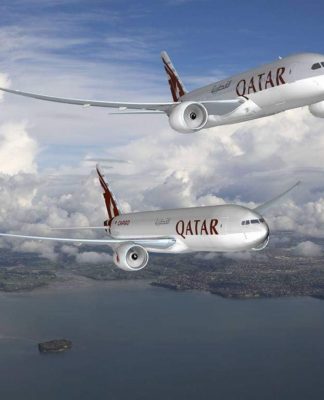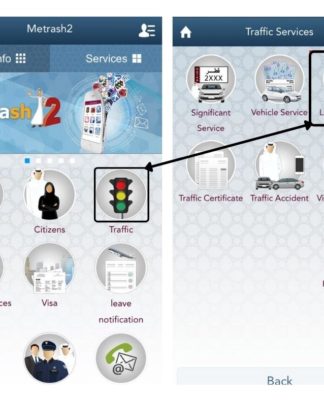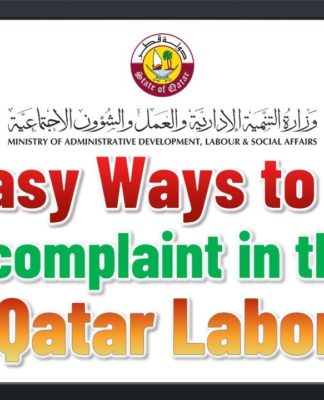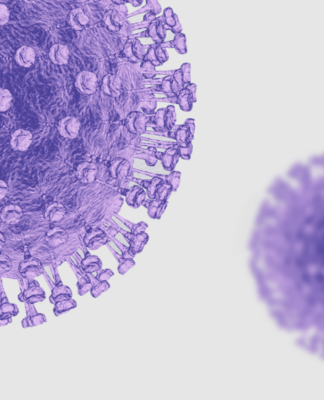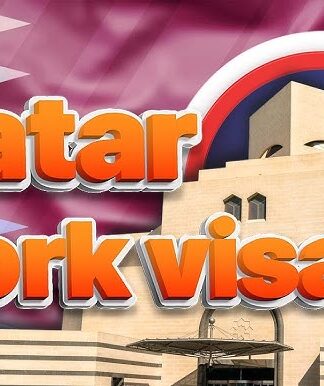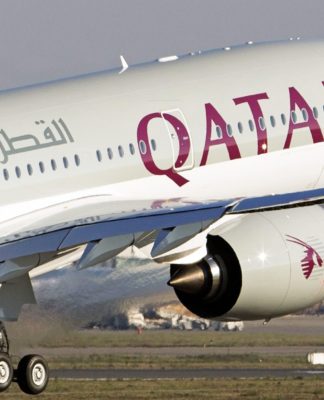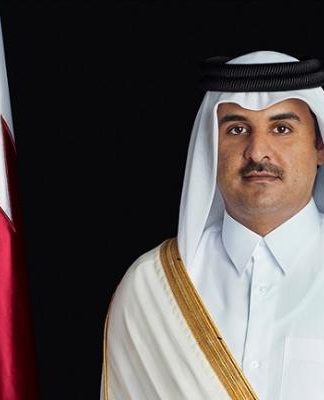SOCCERARGENTINA
World Cup 2022: Argentina’s ‘barras bravas’ bring the noise
Matt Ford
6 hours ago6 hours ago
As Argentina have penetrated deeper into the tournament, La Albiceleste’s support in Qatar has changed. Reports suggest that elements of the country’s notorious ‘barras bravas’ are making their presence felt.
https://p.dw.com/p/4Knb6
As Lionel Messi and his Argentina teammates conducted a lap of honor after their quarterfinal penalty shootout victory over the Netherlands, they were serenaded by a melody which is increasingly becoming the soundtrack to the 2022 World Cup.
“En Argentina nací; tierra de Diego y Lionel!” sang the massed ranks of blue-and-white-clad supporters who made up the overwhelming majority of the 88,000 inside the stadium, many twirling their jerseys rhythmically above their heads: “Born in Argentina; the land of Diego and Lionel!”
Argentina is very much the land of Diego Maradona and Messi; the images of the nation’s two footballing demigods adorning the fans’ flags, banners and t-shirts make that clear enough.
But Argentina is also the country of the barras bravas – the hardcore supporter groups responsible for the breath-taking atmospheres and unique fan culture which have characterized Argentinian football over the last century just as much as Maradona and Messi.
And now, in a notable demographic shift at the World Cup, the barras bravas – which roughly translates as “brave gangs” – also appear to be stamping their rather more raucous mark on Qatar and a tournament which has otherwise been notable for its more gentrified and consumerist fan behavior.
Are the barras bravas in Qatar?
With most tickets in the group stage ranging from $69 to $220, increasing to $205 to $425 by the quarter-finals, and starting at an obscene $605 for the final, the World Cup is generally only accessible to a well-heeled global middle class. It’s a demographic hardly renowned for passionate, raucous atmospheres, with the honorable exception of Morocco.
But that seemed to change during the pulsating quarter-final between Argentina and the Netherlands, where thousands of Argentinian supporters could suddenly be seen standing on their seats behind each goal and indeed on the walls of the stands themselves, fanatically encouraging their compatriots on the pitch.
“I can’t explain this to you because you won’t understand,” they sang. “How many years I’ve cried over the finals we have lost,” looking back on painful defeats against Germany in the World Cup final in 2014 , and Chile in the final of the Copa America in both 2015 and 2016.
For Argentinian daily La Nación, it was the culmination of a development which the newspaper has been steadily observing since Argentina’s opener against Saudi Arabia, where Argentina fans from India and the sub-continent, many resident in Qatar, originally made up a large proportion of the support.
“[But] since then, there has been a change in the behavior of Argentine fans [whose] drums, incessant encouragement and flags [are] familiar to our domestic football,” the paper wrote last week, asking: “Are the barras in Qatar?”
Argentina fans follow the World Cup quarterfinal soccer match between the Netherlands and Argentina, at the Lusail Stadium in Lusail, Qatar, Friday, Dec. 9, 2022.Argentina fans follow the World Cup quarterfinal soccer match between the Netherlands and Argentina, at the Lusail Stadium in Lusail, Qatar, Friday, Dec. 9, 2022.
The land of Diego and Lionel: Images of Maradona and Messi are omnipresent among the Argentinian fansImage: Ariel Schalit/AP/picture alliance
7,000 names handed to Qatari authorities
As football fan culture expert James Montague writes in his 2020 book “1312: Among the Ultras,” the barras bravas have “loosely existed as rowdy, semi-organized groups of supporters since the 1920s … [but] became much more structured and hierarchical in the late 1960s and 70s when clubs recognized that the passionate support could be harnessed for an advantage on the pitch.”
Speaking to DW, Montague added: “Argentinian governments have even been known to support key barras leaders financially, either explicitly or more clandestinely, to get them out to World Cups and help build the atmosphere.”
But that’s not the case this year. On the contrary, according to La Nación, the Argentine Ministry of National Security passed on to the Qatari authorities a list of about 7,000 barras members who were not to be issued Hayya cards, the mandatory ID required for fans at the World Cup.
With many barras often synonymous among the general public with football-related violence and organized crime, the Argentinian minister for security Aníbal Fernández has reportedly identified the idea of a “barras free World Cup” as a key element of his election campaign.
Nevertheless, the Argentinian authorities cannot prevent fans from traveling if they don’t have criminal records, and La Nación reports that elements of barras attached to several Argentinian clubs including Boca Juniors, Velez and Racing Club are present in Qatar, writing:
“They have traveled separately and gather together on game days. Most of them are staying in Barwa, a neighborhood on the outskirts of Doha, where Argentines with on a low-cost budget are spending their World Cup.”
A topless Argentina fan celebrates after Argentina defeated the Netherlands off penalties during the World Cup quarterfinal soccer match between the Netherlands and Argentina, at the Lusail Stadium in Lusail, Qatar, Saturday, Dec. 10, 2022.A topless Argentina fan celebrates after Argentina defeated the Netherlands off penalties during the World Cup quarterfinal soccer match between the Netherlands and Argentina, at the Lusail Stadium in Lusail, Qatar, Saturday, Dec. 10, 2022.
Topless football fans, a common sight in Europe and South America, have caused some consternation in QatarImage: Francisco Seco/AP/picture alliance
‘People sell their cars. People sell their fridges’
For Montague, who has just spent two weeks in Qatar, this shift in demographic is not a surprise. “When a South American team goes a long way in a World Cup, fans make huge sacrifices and travel in huge numbers to support them,” he tells DW.
“Of course, the demographic does skew towards those who have more money, but that doesn’t mean that poorer or more working class fans don’t find ways to get there. People literally sell everything to go. They sell their cars. They sell their fridges.
“There’s a mentality among certain fans in South America that, if your team is going a long way in a tournament, you just get there and work the rest out later. It’s a unique type of support.”
It’s not only unique; it’s fiercely independent, active, passionate and unconditional, an expression of a living sub-culture, warts and all.
For all their darker sides, the barras bravas also represent the sort of organic football support which, it would appear, FIFA and Qatar don’t want at the World Cup, where fans – or customers, in their eyes – are expected to obediently attend fan zones and be passively entertained by pre-match light shows, pop music and countdowns to kick-off.
According to Ignacio Candia, national director of security for sports events with the Argentine Federal Police, who has been in Doha for the duration of the tournament and who was quoted by La Nación, the Qatari authorities have been most irritated by Argentinian fans taking off their shirts during games and gathering behind the goals, often stood on seats which aren’t technically theirs with their drums and flags.
Fans of Argentina shows a flag with the portrait of Diego Maradona after the Quarterfinal between the Netherlands and ArgentinaFans of Argentina shows a flag with the portrait of Diego Maradona after the Quarterfinal between the Netherlands and Argentina
God: Diego MaradonaImage: Zheng Huansong/Xinhua/picture alliance
Dreaming of Messi and Maradona
It’s a clash of worlds, but the barras will be there again when Argentina face Croatia in the first semifinal on Tuesday, towering above the pitch at the Lusail Iconic Stadium like a blue wave, gathering pace and momentum and volume in the belief that, after decades of disappointment, this could finally be their year.
“Boys, now we’re dreaming again,” they’ll sing, waving their arms in unison. “I want to win it for the third time, I want to be world champion. Diego, we can see him up in heaven, cheering on Lionel.”
Matt Ford Kommentarbild Matt Ford Kommentarbild
Matt Ford Reporter and editor for DW Sports specializing in European football, fan culture & sports politics.
@matt_4d












